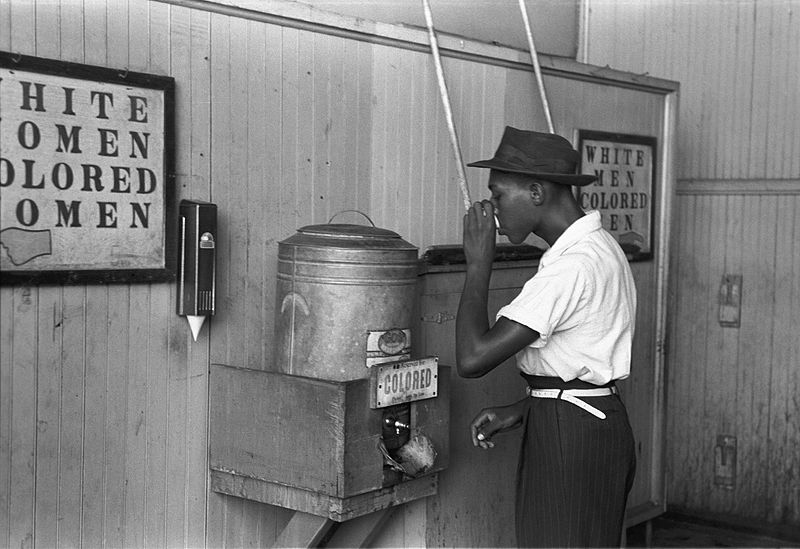New Jim Crow
Michelle Alexander, the author of The New Jim Crow, is a professor at Union Theological Seminary, a New York Times columnist, and civil rights lawyer and advocate. I believe that the motive she had in writing her book was to explain how Jim Crow still exists in America even though people sometimes choose not to see it. It exists today in hidden and not-so-hidden ways, as it is part of the power structure that still dominates America. The prison industrial complex is just one example of how Jim Crow still exists, as Alexander shows. Her aim is to draw attention to the mass incarceration system that is based on racial prejudice and unite people to oppose it: “If we want to do more than just end mass incarceration—if we want to put an end to the history of racial caste in America—we must lay down our racial bribes, join hands with people of all colors who are not content to wait for change to trickle down, and say to those who would stand in our way: Accept all of us or none.”1 Alexander’s intention is to open up the eyes of her audience and to inspire them to be activists in their own right to help overthrow the New Jim Crow system.

Alexander’s main arguments are: 1) the criminal justice system is racially prejudiced and oppressive towards young, black men, as is evidenced by the fact that half of the young, black male population in urban areas “are currently under the control of the criminal justice system”;2 2) the War on Drugs is a pretext for oppressing the black community, as is evidenced by the fact that black defendants are routinely denied representation and are threatened to accept plea deals to avoid the possibility of even harsher sentences—but all the same they get sucked into the prison industrial complex all the same, and once inside there is almost no possibility of escape;3 and 3) the “prison label” is applied to ex-convicts to keep them oppressed even after they are released from prison, which makes it harder for them to be accepted back into the mainstream and thus invariably forces them back into a life of crime and back into the prison system, which acts as the new plantation system.4 In fact, it has been well documented that prisoners are used as the new slaves that allow corporations to profit off their labor.5 All of this is made possible under the New Jim Crow because, as Angela Davis notes, the prison industrial complex is “accompanied by an ideological campaign to persuade us once again…that race is a marker of criminality.”6...
Millions ended up in the Soviet Gulag prison system, and the same thing is happening in the U.S. and for the same reasons. The Soviets were waging an ideological war against anyone who objected to their worldview, and in the U.S. the elites are doing the same thing. The elites tend to be of the White Anglo Saxon Protestant (WASP) background and their power structure has been dominant in the U.S. from the beginning. So while slavery ended in the 19th century, Jim Crow replaced it and today the New Jim Crow via mass incarceration of the black male population is the means of control and oppression that the elites use to enslave the black community. If this is not a human rights and civil rights issue, I don’t know what is.
The war on drugs and involvement of U.S. Presidents has been particularly problematic. President Clinton, for instance, promoted a “get tough” on crime policy and endorsed the “three strikes and you’re out” law, which essentially threw the book at the black population that was already being unfairly targeted by the criminal justice system and given strict and harsh sentences for drug use and trafficking.7 Reagan, who rolled out the War on Drugs, oversaw Operation Pipeline which allowed officers to use minor violations as a pretext for searches, seizures and arrests—a direct violation of everything the Constitution meant to protect against.8 The War on Drugs has been a colossal failure but this is not surprising as the U.S. government and its CIA are part of the problem of smuggling and trafficking drugs—for example, it is no coincidence that heroin use around the world and in the U.S. spiked dramatically once U.S. soldiers “liberated” the poppy fields in Afghanistan, which is where heroin comes from.
They liberated it by opening up the drug trade even wider than ever as a means of funding CIA black operations. This is no secret to anyone but it goes unaddressed because the CIA is operated by the same members of the WASP establishment that have always overseen the system. They go unpunished while Presidents like Reagan, Clinton, Bush I and Bush II all do whatever they can to enforce unfair drug laws so as to keep the prison industrial complex well-fed with human lives from minority populations. The repercussions of this War are that millions of lives are shattered, families are broken up and…




